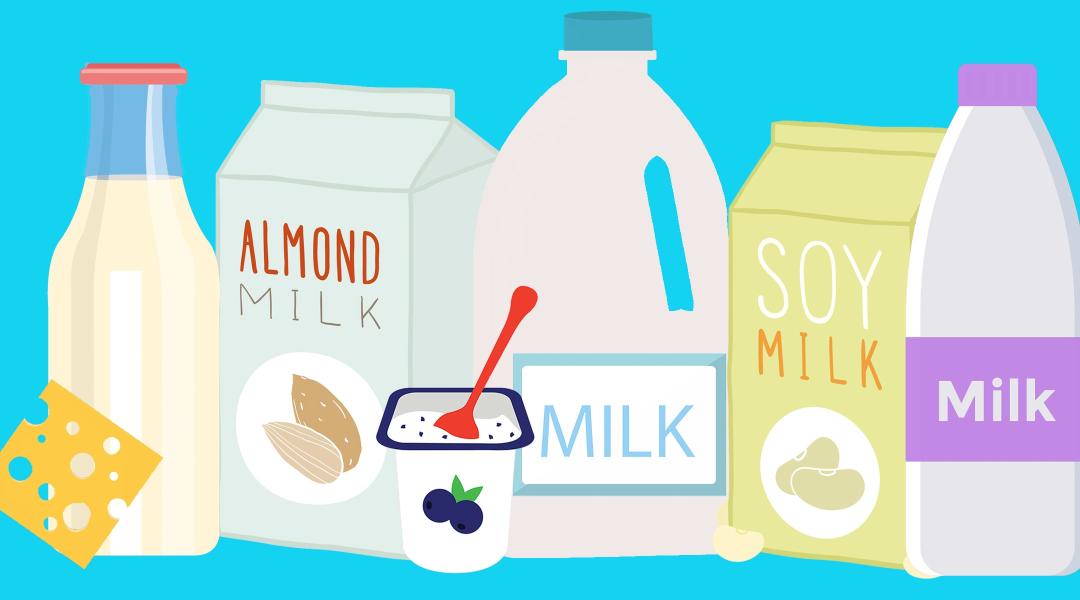Whole Milk or Skim Milk
For decades, nutrition guidelines have recommended only low-fat dairy products for everyone over the age of two. However, in recent years, scientists have called that recommendation into question. Recent studies suggest that skim might not always be the healthiest option when it comes to milk.
Milk Type
Whole milk: 3.25% milk fat
Low-fat milk: 1% milk fat
Skim: Less than 0.5% milk fat
Why Is Whole Milk Sometimes Considered Unhealthy?
For years, nutrition guidelines have been instructing people to avoid whole milk, mainly due to its saturated fat content.
Mainstream nutrition recommendations advise limiting saturated fat due to its supposed connection to heart disease.
Some studies have shown that saturated fat raises cholesterol levels, and researchers know that high cholesterol levels are associated with an increased risk of heart disease.
Based on this information, experts made the assumption that saturated fat must increase the risk of heart disease. However, there was no experimental evidence to prove that this was true.
In the 1970s, public policy was adopted based on this assumed connection between saturated fat and heart disease. As a result, official guidelines instructed people to reduce their saturated fat intake.
A cup (237 ml) of whole milk contains 4.6 grams of saturated fat, which is about 20% of the daily amount recommended by the 2015 Dietary Guidelines for Americans.
For this reason, the guidelines recommend consuming only low-fat or skim milk.
In recent years, this recommendation has been called into question. There is now plenty of experimental data to indicate that eating saturated fat does not cause heart disease.
Why is skim milk not a healthy choice?
1) Skim milk about has twice the amount of sugar as full-fat cream. When you take out the fat, you add sugar to make up for it, and don’t we all know by now that fat doesn’t make you fat…sugar does? This means if you’re buying skim milk to manage your weight, you’re making a mistake.
2) Skim milk is totally devoid of nutritional value. The vitamins (A, D, E, and K) in milk are fat soluble, which means they need fat in order to be absorbed by the body. Also, calcium absorption is enhanced by Vitamin D, but Vitamin D needs fat, so skim milk breaks the entire chain of absorption and becomes nutritionally empty. It’s basically like drinking sugar water.
3) Saturated fat (which is removed to create skim milk) has satiating, blood sugar stabilizing effects. Fats slow the release of sugar into your bloodstream. Eating a low-fat diet that makes up for the fat by adding more sugar can lead to blood sugar issues like diabetes and hypoglycemia. Contrary to popular belief, low-fat does NOT mean healthier!
4) The dairy industry often adds skim milk powder to skim milk. Skim milk powder processing causes the cholesterol in the milk to be oxidized – and oxidized cholesterol can lead to the buildup of plaque in the arteries. Cholesterol that naturally occurs in food is not something to worry about, but oxidized cholesterol can cause inflammation in the body and contribute to heart disease.
5) Because skim milk is a highly processed, “altered” food, it can leave you feeling unsatisfied and experiencing cravings for something more. Our bodies thrive on whole foods, the way they are found in nature. Eating a diet full of high-quality protein and healthy fats from whole foods can prevent the ups and downs and cravings that come from eating fat-free foods that are “missing something.
Fun Facts about Milk
Drinking Whole Milk May Actually Help You Manage Your Weight
Whole Milk May Lower Your Risk of Chronic Disease
Not only is there no scientific evidence proving that the saturated fat in whole milk causes heart disease, but several studies have shown that drinking whole milk is associated with health benefits.
Multiple studies have shown that drinking whole milk is associated with a lower risk of metabolic syndrome.
Metabolic syndrome is the name given to a group of risk factors, including insulin resistance, abdominal obesity, low HDL levels, and high triglyceride levels.
When these risk factors are present together, your risk of diabetes and heart disease is high.
A study of more than 1,800 people found that adults with the highest intake of high-fat dairy products had a 59% lower risk of metabolic syndrome than adults with the lowest intake.
A 2016 study of nearly 10,000 adults found that high-fat dairy products are associated with decreased markers of metabolic syndrome. The study found no beneficial effects associated with low-fat dairy.
The fatty acids in whole milk are likely responsible for its health benefits.
In one large study, people with the highest amount of dairy-derived fatty acids in their bloodstreams had a 44% lower rate of diabetes than those with the lowest amount.
Drinking whole milk may have other notable benefits including increased fertility and a lower risk of colon cancer. However, the evidence is not strong.
References:
https://www.healthline.com/nutrition/whole-vs-skim-milk#section6
https://www.bewell.com/blog/5-reasons-to-skip-the-skim-milk/
Related Articles
Search
Categories
Popular Posts





















Comments: 0
No comments